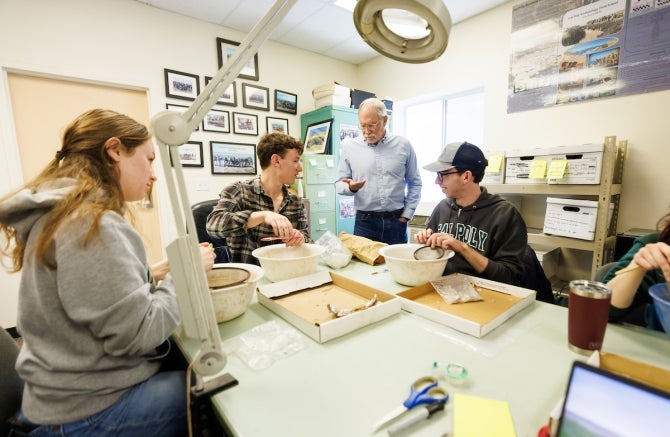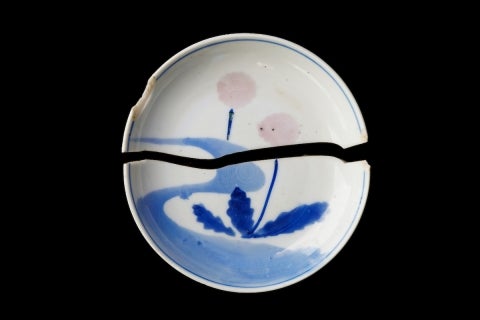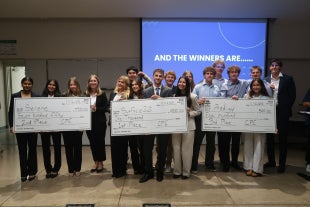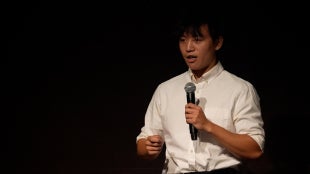Cal Poly Students Share Forgotten Local History in Exhibit Honoring Incarcerated Japanese American Family

Contact: Jay Thompson
805-235-0955; jthomp04@calpoly.edu
Exhibit opens Friday, May 30, at SLO History Center with reception including students and members of the Yoshida family raised on the home site near Montaña de Oro State Park
SAN LUIS OBISPO — A year after excavating a century-old homestead, Cal Poly anthropology and geography students will share artifacts and stories about the Yoshida family in a public display.
The History Center of San Luis Obispo County invites the public to an opening reception for “A Dream Interrupted” on Friday, May 30, at 6:30 p.m. at 696 Monterey St., San Luis Obispo. The event will also be streamed live via Zoom (free preregistration required). The display will be open through August.
The student-curated exhibit was created in partnership with the descendants of the Yoshida family, a Japanese American family who lived on the Pecho Coast near Point Buchon from 1928 to 1942 when an executive order, signed by President Franklin D. Roosevelt, authorized the removal of Japanese Americans from certain areas on the West Coast and their incarceration in internment camps during World War II.
The display features artifacts unearthed by students in a May 2024 archaeological excavation, which they have been cataloging and studying ever since. Artifacts will be paired with oral histories and family photos to bring this nearly century-old story to life.
“In my 45 years as a professional archaeologist, this has been one of the most meaningful, if not powerful, projects I have ever been involved with,” said Professor Terry Jones, who led the excavation and exhibit effort. “Artifacts, bones and shells recovered from the dig allowed students and descendants alike to establish a tangible, powerful connection with the past.

“This display is intended to capture that experience and further celebrate the lives of this Japanese American family, just one of tens of thousands who suffered the same fate, and to recognize and honor their perseverance in the face of extreme injustice.”
Students will share their own stories of the project to document the impacts of FDR’s controversial Executive Order 9066 from 1942.
“Being able to connect with the Yoshidas and bring attention to their family story has been such an honor — and truly the best part of my college experience,” said Lacey May, a fourth-year anthropology and geography student. “This project has drawn in a lot of interest from people from all over. When we presented this project at the Society for California Archaeology and additionally for Cal Poly's Green and Gold Banquet, so many people recounted similar stories that their families went through during WWII and Japanese Incarceration. The reach of this project and how much it hits home for so many has made me realize it’s larger significance.”
Collin Marfia, a graduate student in the Higher Education, Counseling and Student Affairs program, was part of the student team as an undergraduate and continued his efforts this academic year.
“To be able to work on this project and work with the family was so, so impactful,” said the alumnus (History, Anthropology and Geography, ’24). “To get to do restorative work and help the family connect back to a part of their lives was such a beautiful experience, and I just hope that being able to visit the site and leave a part of themselves there was as impactful for them as it was for me to witness.”
The evening will include reflections from the student exhibit designers as well as members of the Yoshida family, who have closely collaborated on the project throughout.
“A Dream Interrupted” is a powerful example of Cal Poly’s Learn by Doing philosophy in action — one that honors history, invites reflection and connects generations through memory, scholarship and community.
To learn more about the project, visit: https://www.calpoly.edu/news/anthropology-students-work-artifacts-they-excavated-and-theyll-be-display-soon.
To register for Zoom: www.historycenterslo.org/lecture.
Top photo: Students in Anthropology professor Terry L. Jones’ ANT 311-Archaeological Laboratory Methods class perform post-field processing, classification, analysis, and preservation of archaeological materials found at a site occupied by Japanese tenant farmers between the late 1920s and 1942 near Diablo Canyon Power Plant.
Photo by Joe Johnston | Cal Poly


